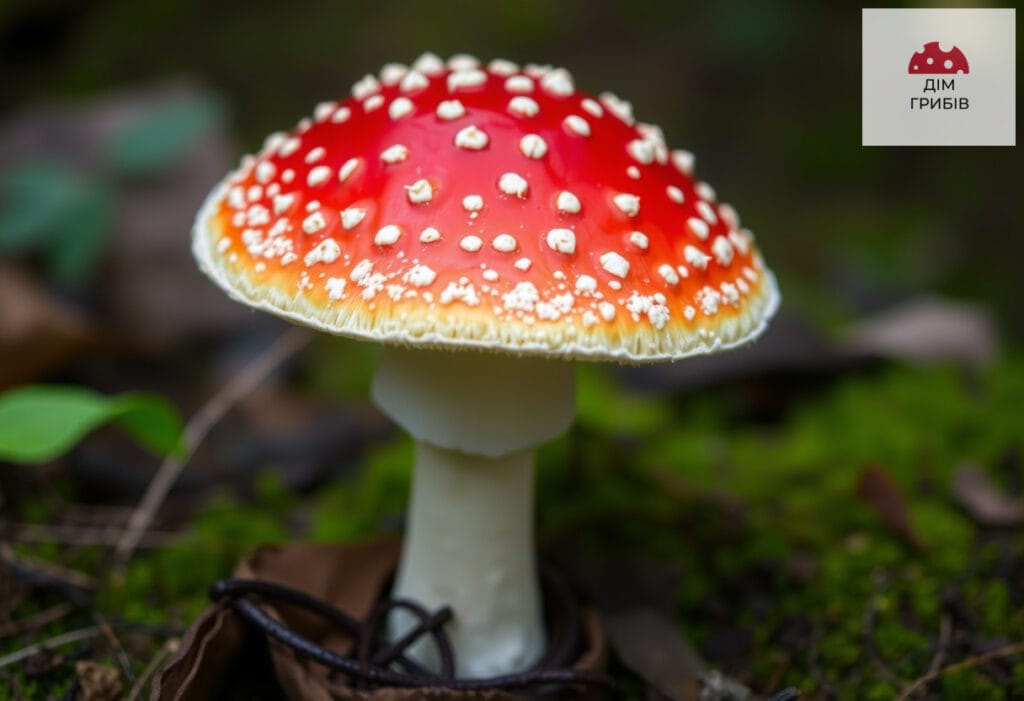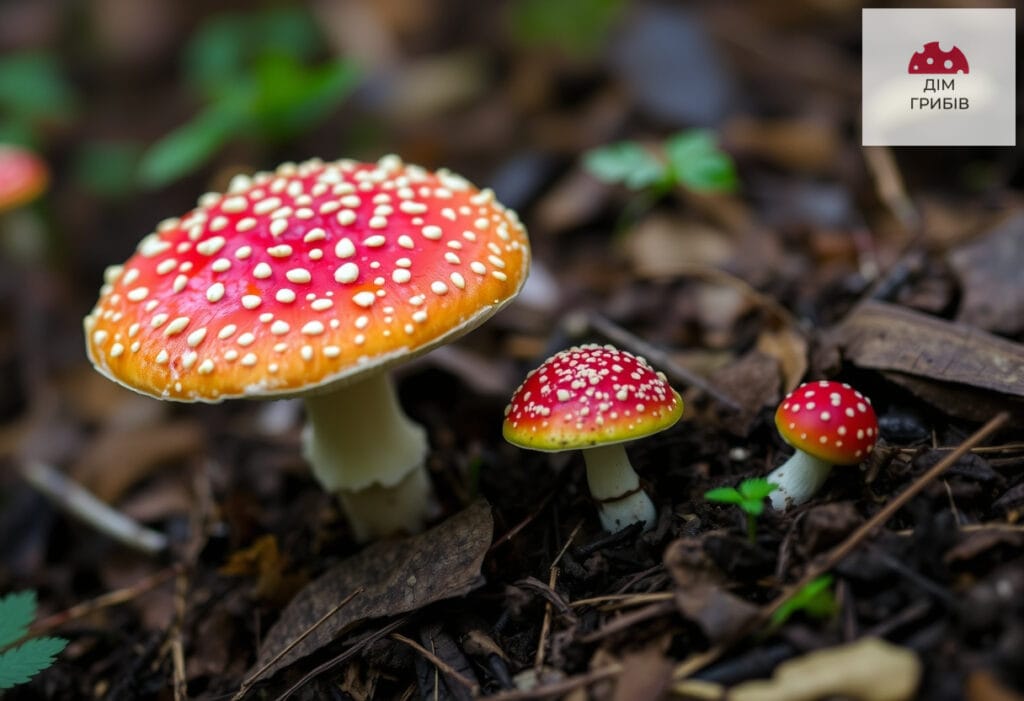Panther fly agaric effect: Discovering myths and reality

Panther fly agaric effect
The panther fly agaric effect is a topic of great interest among scientists, psychologists, and herbal therapy enthusiasts. The panther fly agaric, also known as Amanita muscaria, is a poisonous mushroom that is associated with many myths and legends. In this article, we will take a detailed look at how this mushroom affects the human body, whether it has any beneficial properties, and the risks associated with its use.
What is a panther fly agaric?
The Panther fly agaric (Amanita muscaria) is a typical representative of the Amanita family. This mushroom has a bright red cap with white dots, which makes it easily recognizable. It grows in forests, paths and parks, usually under trees such as spruce and pine. In Ukraine, it is found everywhere in a temperate climate.
Characteristics and biology
The Panther Amanita is not only beautiful, but also an extremely interesting mushroom. It plays an important role in the ecosystem, contributing to the processing of organic residues and interacting with other species. The unique structure of its fruiting body marks its adaptation to the environment. Its cap can reach a diameter of up to 20 cm, and the stem can reach a height of up to 15 cm.
The mushroom contains two main active components: muscarine and ibotenic acid, which give it psychoactive properties. These compounds can affect the human central nervous system, causing various changes in consciousness.
Composition and chemical profile
Chemical analysis of the panther fly agaric shows that it contains several important elements:
- Ibotenic acid – the main neurotoxin that causes psychoactive effects.
- Muscarine – causes cholinergic effects, poses a health risk if consumed excessively.
- Pantothenic acid – less known, but also important in the context of its effects on the body.
Studies conducted at several universities have noted that the concentration of these components can vary depending on growing conditions and region. For example, analyses show that mountain populations of mushrooms can have higher concentrations of psychoactive agents than their lowland relatives.
The effect of panther fly agaric on the human body
Panther fly agaric is primarily known for its ability to alter the state of consciousness. Effects that may occur after use include:
- Strong euphoria.
- Changes in perception of reality.
- Reducing the level of anxiety:
- Visual and auditory hallucinations.
- Impaired coordination of movements.
According to a study published in NCBI, effects may vary depending on dosage and individual characteristics of the body. It has been noted that doses of less than 15 grams of dried mushroom most often cause mild changes in perception, while larger doses can lead to dangerous conditions.
Research and scientific discoveries
Research on the panther fly agaric began in the 20th century. Many scientists sought to understand the mechanisms by which this mushroom affects the brain. Scientific experiments have shown that the active components of the panther fly agaric can alter the levels of neurotransmitters in the brain, in particular, serotonin and dopamine.
| Neurotransmitter | Function | Impact of the panther fly agaric |
|---|---|---|
| Serotonin | Mood regulation | May increase feelings of euphoria |
| Dopamine | Control of pleasure and motivation | Changes in levels can cause hallucinations |
| Norepinephrine | Stress reaction | May trigger anxiety |
Experiments conducted as part of psychologists' research have demonstrated that panther fly agaric effect may be used in some forms of therapy, but more research is needed to ensure safe use. It is essential that any use of this mushroom be done under controlled conditions.
Risks and consequences of use
Unscrupulous use of panther fly agaric and self-experimentation with dosage can lead to serious consequences. The main risks are:
- Poisoning – symptoms of poisoning can include nausea, dizziness, impaired consciousness, and even coma.
- Long-term mental disorders – using this mushroom can trigger increased anxiety, depression, or even psychosis.
- Death from overdose – although rare, it is possible.
According to the World Health Organization, the panther fly agaric is one of the most dangerous wild plants that can lead to various complications after consumption. It is important to emphasize that self-medication or use for experiments with the panther fly agaric without consulting with specialists can have serious consequences.
Traditional use
In some cultures, particularly among the indigenous peoples of North America, the panther fly agaric was used for ritual purposes. It was believed that it could open “windows” to the afterlife and aid in communication with spirits. These rituals were often accompanied by specific practices to reduce the risks of poisoning.
On the other hand, in traditional medicine, it has been noted that the panther fly agaric has certain medicinal properties in small doses, but access to this mushroom should be exclusively under the supervision of specialists, given its toxicity. Traditional methods of use consisted of moistening the mushroom and preparing infusions, while it is important to adhere to precise dosages.
Prospects for neurobiological research
Research is currently underway that could shed light on the potential medical uses of panther fly agaric. Scientists are investigating its potential use in treating people with mental health disorders, including addictions. Taking small doses of panther fly agaric under the supervision of a healthcare professional may help treat some forms of depression, according to preliminary clinical trial results.
Previous studies have shown that patients in recovery from addictions can experience improvements in their mental state at low doses. Such factors are driving the research panther fly agaric effect as one of the possible avenues in alternative medicine. Scientists continue to look for new ways to use this mushroom in medicine, particularly as part of innovative psychotherapeutic approaches.
Information for research
To further study the topic, it is worth referring to a number of reliable sources:
- Scientific article on the effects of mushrooms
- Influence on neural structures
- Potential anti-inflammatory properties
Animal models are also being used to better understand the mechanisms of panther fly agaric's effects on the brain, as it allows for more controlled testing without risk to humans. These studies provide the basis for further development of safe treatments.
Summarizing all knowledge about panther fly agaric effect, it is important to note that despite its potential benefits, there are many risks associated with the use of this mushroom, and its consumption should be done with great caution. Therefore, when researching this topic, it is always worth being cautious and taking into account the constantly updated scientific recommendations. This process requires continuous attention and research, because the panther fly agaric could be the key to new therapeutic avenues.
Our catalog of medicinal mushrooms watch here:
Herbal medicinal teas
Mushrooms in capsules
Dried mushrooms
Ground mushrooms
Mushroom ointments and tinctures







What factors can influence the concentration of components in mushrooms, according to studies at several universities?